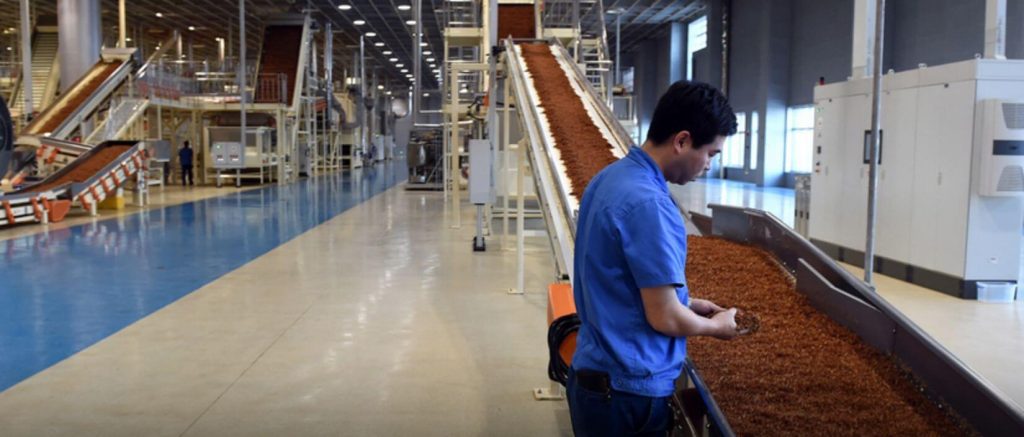
Tobacco manufacturing is a complex and fascinating process that involves many steps and skilled workers. From growing and harvesting the tobacco plant to curing, fermenting, and processing the leaves, there is a lot that goes into creating the final product.
The history of tobacco manufacturing dates back thousands of years. Native Americans were the first to cultivate tobacco, using it for medicinal and ceremonial purposes. European explorers brought tobacco back to Europe in the 16th century, where it quickly became popular.
The tobacco plant is a member of the nightshade family and is native to the Americas. There are many different varieties of tobacco, each with its own unique flavor and characteristics. Tobacco plants are grown in warm climates with well-drained soil.
Growing and harvesting tobacco is a labor-intensive process. The plants must be carefully tended to ensure that they produce high-quality leaves. Once the leaves are mature, they are carefully harvested by hand.
After harvesting, the tobacco leaves must be cured and fermented. This process removes moisture from the leaves and enhances their flavor. There are several different methods for curing tobacco, including air-curing, flue-curing, fire-curing, and sun-curing.
Once the leaves have been cured and fermented, they are ready to be processed. This involves removing the stems from the leaves and cutting them into smaller pieces. The processed tobacco is then used to make cigarettes, cigars, pipe tobacco, and other products.
Rolling cigarettes and cigars is a skilled craft that requires precision and attention to detail. The tobacco is carefully rolled into paper or leaf wrappers to create the final product. Many factories use machines to roll cigarettes, while cigars are often still rolled by hand.
After the cigarettes or cigars have been rolled, they are packaged and distributed. The packaging must be carefully designed to protect the product during shipping and storage. Many countries have strict regulations on tobacco packaging, including warning labels and graphic images.
The economics of tobacco manufacturing is complex. The industry generates billions of dollars in revenue each year but is also subject to high taxes and regulations. Many countries have implemented measures to reduce smoking rates, such as increasing taxes on tobacco products and banning advertising.
The global impact of tobacco manufacturing is significant. The industry employs millions of people worldwide and generates billions of dollars in revenue. However, there are also concerns about the health effects of smoking and the environmental impact of tobacco farming.
Innovations in tobacco manufacturing are focused on creating safer and more sustainable products. This includes developing new methods for growing tobacco that reduce the use of pesticides and fertilizers. There are also efforts to create alternative products such as e-cigarettes that deliver nicotine without burning tobacco.
The future of tobacco manufacturing is uncertain. As smoking rates decline in many countries, the industry is facing challenges. However, there are also opportunities for growth in emerging markets and through the development of new products.
Tobacco manufacturing is a complex process that involves many steps and skilled workers. From growing and harvesting the tobacco plant to curing, fermenting, processing, rolling, packaging, and distributing the final product, there is a lot that goes into creating cigarettes, cigars, pipe tobacco, and other products.
FAQs:
What is tobacco manufacturing?
Tobacco manufacturing is the process of converting raw tobacco leaves into finished tobacco products such as cigarettes, cigars, and smokeless tobacco.
2.
Who regulates tobacco manufacturing?
In the United States, the FDA regulates tobacco product manufacturers and provides information on compliance with FDA’s tobacco regulations.
3.
Where is tobacco grown?
Tobacco is grown in many countries around the world, including the United States, Brazil, China, India, and Zimbabwe.
4.
Why is tobacco cured?
Tobacco leaves are cured to remove moisture and enhance their flavor.
5.
How is tobacco processed?
Tobacco leaves are processed by removing the stems and cutting them into smaller pieces. The processed tobacco is then used to make cigarettes, cigars, pipe tobacco, and other products.
6.
Is all tobacco the same?
No, there are many different varieties of tobacco, each with its own unique flavor and characteristics.
7.
Can tobacco be grown organically?
Yes, some farmers grow organic tobacco using methods that do not rely on synthetic pesticides or fertilizers.
8.
Does all tobacco contain nicotine?
Yes, all varieties of tobacco contain nicotine, a highly addictive substance.
9.
Will there be new regulations for tobacco manufacturing?
The FDA periodically proposes new requirements for tobacco product manufacturers regarding the manufacture, design, packing and storage of their products.
10.
What are some innovations in tobacco manufacturing?
Innovations in tobacco manufacturing include developing new methods for growing tobacco that reduce the use of pesticides and fertilizers and creating alternative products such as e-cigarettes that deliver nicotine without burning tobacco.
11.
What are some challenges facing the tobacco manufacturing industry?
Some challenges facing the tobacco manufacturing industry include declining smoking rates in many countries and increasing regulations and taxes on tobacco products.
12.
How has technology impacted tobacco manufacturing?
Technology has impacted many aspects of tobacco manufacturing, including improving efficiency in growing, harvesting, curing, processing, and packaging tobacco.
Citations:
- FDA – Manufacturing (https://www.fda.gov/tobacco-products/compliance-enforcement-training/manufacturing)
- FDA Proposes New Requirements for Tobacco Product Manufacturing Practices (https://www.fda.gov/news-events/press-announcements/fda-proposes-new-requirements-tobacco-product-manufacturing-practices)
- PMI – Tobacco farming and curing (https://www.pmi.com/tobacco-economics/tobacco-farming-and-curing)